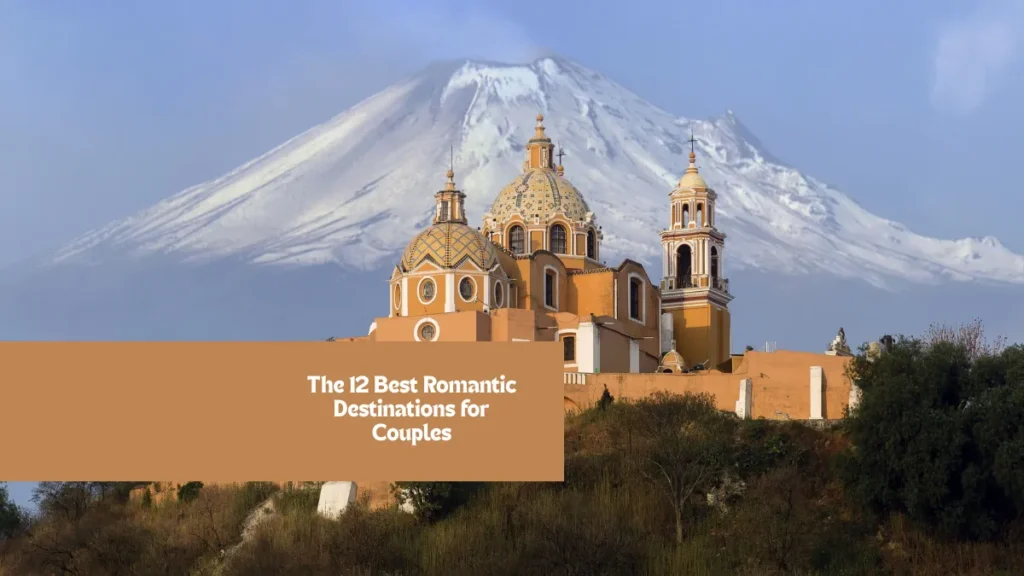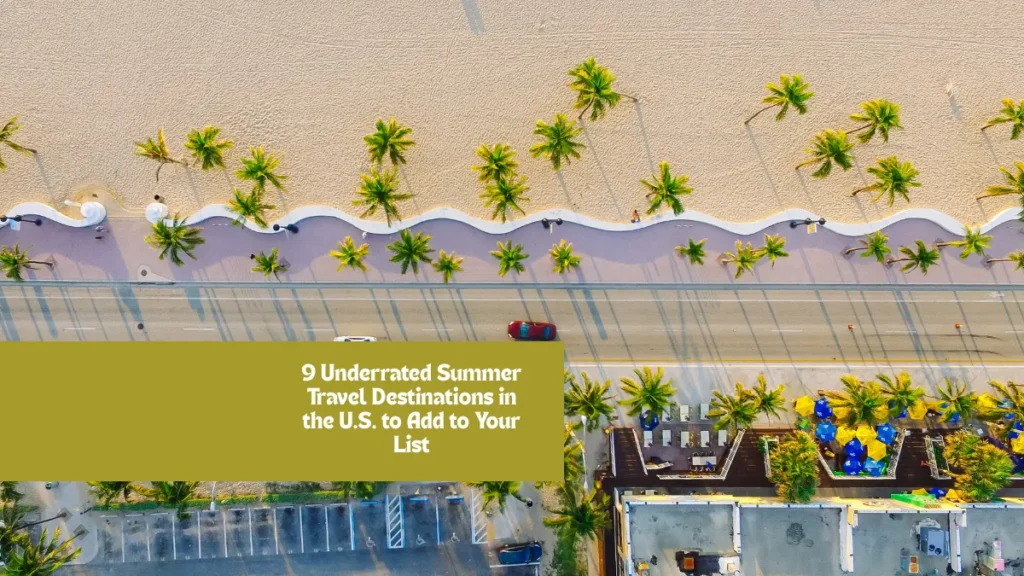Many well-known locations are nearing a breaking point as world travel keeps exploding. Some governments and localities are changing their open-door policies in response to overtourism, environmental harm, and cultural degradation. From the immaculate mountains of Bhutan to the delicate ecosystems of the Galápagos Islands, several areas are enforcing stricter rules—or even considering total closures—to preserve their legacy and ecology.
This tendency points to a change toward controlled and more environmentally friendly travel. Ten locations that might soon close the door on visitors, either partially or totally, to protect what makes them so unique in the first place are investigated in this blog. Knowing these possible changes will enable you to make more responsible, informed travel decisions before it’s too late, regardless of your level of international travel or future adventure planning.
Bhutan
Long known for its rigorous attitude to travel, Bhutan stresses quality before number. To protect its ecology and culture, the Himalayan kingdom instituted the “High Value, Low Impact” travel concept. Paying a daily Sustainable Development Fee—currently $100 per day for most visitors—travelers directly help infrastructure and conservation. To preserve the spiritual tranquility of its old monasteries and temples and lessen strain on its immaculate natural surroundings, Bhutan caps visitor counts.
Bhutan has become more focused in recent years on maintaining its distinct ecosystem and character in the face of growing world travel. Bhutan is not likely to accept widespread tourism given its poor infrastructure and significant emphasis on Gross National Happiness instead of economic development. Bhutan could limit visitor access even further, particularly in more sensitive or distant areas, given continuous environmental pressures and the government’s strong posture. Higher taxes, stricter rules, or perhaps seasonal closures to save cultural sites and wildlife could all fall under this category.
Italy’s Venice
Often referred to as “The Floating City,” Venice has been overrun with mass tourism for years as cruise ships and day-trippers tax its fragile ecosystem and infrastructure. While millions of visitors swarm the city to meander its famous canals, the population has slowly dropped. The local authorities responded with several limitations, including prohibiting big cruise ships from docking in the historic center and charging day visitors an entrance fee.
Travelers starting in 2024 must pay a fee and book their trips; non-compliance results in fines. These steps mark only the start since authorities are thinking of stricter restrictions to protect Venice’s delicate surroundings and cultural legacy. Rising flooding mostly caused by climate change and more foot traffic has made preservation of Venice a top concern. Should congestion persist in spite of present policies, the city might consider drastically restricting daily visitor counts, implementing seasonal bans, or perhaps temporarily closing specific areas to non-residents in order to maintain UNESCO World Heritage designation.
Barcelona, Spain
Drawing approximately thirty million visitors a year, Barcelona is among the most visited cities in Europe. Although tourism has tremendously helped the local economy, it has also resulted in overtourism, increasing property prices, and resident annoyance. Short-term rentals and noise pollution have fundamentally changed the character of neighborhoods like Barri Gòtic and El Raval. City officials have responded by acting heavily to lower visitor count. Among these are restricting hotel licenses, enforcing illegal rental policies, and highlighting less-traveled areas.
The mayor has stated plans to shift to a sustainable tourist strategy, giving resident welfare top priority. Mass tourism is under increasing local criticism as demonstrations and graffiti ask visitors to return home. More limiting policies might be in store as the city struggles with the effects of its popularity. These could include even zoning rules prohibiting the growth of tourism in residential areas, curbs on the number of visitors allowed in important attractions, and more restrictions on lodging.
Machu Picchu, a Peruvian site
Long vulnerable to overtourism, Machu Picchu, the famous Incan citadel tucked up in the Andes, has Built to accommodate a few hundred people, it draws more than a million visitors a year. This flood speeds environmental degradation and compromises the site’s structural integrity. The Peruvian government responded by instituting regular admission periods, a ticketing system restricting daily visitors, and dedicated paths to manage foot traffic. The popular hiking path to Machu Picchu, the Inca Trail, also has a daily hike cap and calls for pre-reservations. The monument is still under strain even with these steps, though, and UNESCO has often cautioned that Machu Picchu would lose its World Heritage designation should action not be taken to lower its environmental impact. Future limits might call for even alternating access to various zones to enable restoration, or perhaps limited visitor numbers and mandated guided tours exclusively. To stop permanent deterioration and encourage long-term preservation, the authorities might finally close the site for prolonged lengths of time.
Thailand
Long a draw for international travel, Thailand boasts breathtaking beaches, energetic cities, and rich cultural legacy. Mass tourism’s environmental effects, especially in areas like Phuket, Koh Phi Phi, and Maya Bay, are now rather clear-cut, though. Made well-known in the film The Beach, Maya Bay closed in 2018 owing to overcrowding and damage to coral reefs.
Though it has lately reopened under tight restrictions, the closing represented a turning point in Thai tourism policy. Nowadays, the government is pushing travelers to discover less-known areas by stressing eco-tourism and quality above volume. Thailand might restrict access to well-known tourist destinations or enforce tougher rules on tour operators given increased environmental awareness and worries about cultural degradation. Higher entrance fees for natural parks and marine environments are also being pushed for implementation. Thailand might permanently or temporarily close access to some of its most famous sites if tourism keeps endangering local livelihoods and environmental balance.
Iceland
Thanks to cheap flights and social media, Iceland’s spectacular scenery—from geysers and glaciers to volcanoes and black sand beaches—has become somewhat famous. Over the previous ten years, the nation had a tourist explosion with visitors much above its small population. Although travel has helped the economy, it has also put pressure on infrastructure and natural wonders, including the Blue Lagoon, Golden Circle, and Fjaðrálgljúfur canyon. Certain sites have been closed temporarily to let the environment heal, and Icelandic officials are speaking more and more about the need for sustainable travel.
Already in progress are plans to charge more entrance fees, limit access during off-seasons, and restrict the number of visitors in vulnerable locations. Iceland might enact more extreme policies going forward, such as tourist caps or required guided tours in high-impact areas. Should environmental harm persist, some locations can be totally closed to visitors. Iceland is a possible candidate for more stringent entry restrictions since its emphasis is now on maintaining its natural beauty rather than increasing tourist count.
New Zealand
Millions of visitors annually from New Zealand’s untouched landscapes and outdoor adventure attractions have generated both environmental impact and financial gains but also burdens. The infrastructure of the nation finds it difficult to handle big crowds, especially in outlying places. Among residents and conservationists, overcrowding in national parks, more trash, and environmental harm have set out concerns. New Zealand responded by enacting policies like prohibitions on freedom camping and the International Visitor Conservation and Tourism Levy.
The “Tiaki Promise,” which the government has also pushed, invites visitors to travel ethically and honor native customs and the environment. Particularly in ecologically fragile locations like Milford Sound and the Tongariro Alpine Crossing, authorities are looking at stricter regulations. To lessen the impact of tourism, New Zealand might impose tougher licenses, daily visitor limitations, and more taxes going forward. Additionally on the chart are seasonal or area-specific closures. New Zealand might act boldly to protect its environment, including restricting access to well-known locations, based on a strong national identity linked with conservation and indigenous Māori values.
Galápagos Islands, Ecuador
Among the most ecologically delicate locations on Earth, the Galápagos Islands are home to rare species not found anywhere else. Rising tourism to the islands in recent years begs questions over the effects on delicate ecosystems and native species. Strict rules Ecuador has put in place include required guides, limited permits, and restrictions on the quantity of planes and cruise ships. Human activity nevertheless endangers the biodiversity of the islands by pollution, invading species, and habitat disturbance notwithstanding these efforts.
To preserve their natural purity, conservation organizations have asked the government to restrict travel even to some islands. Closely observing tourist effects, the Galápagos National Park Directorate may create no-go zones or cut yearly permit counts. To discourage casual travel, the government might eventually enact seasonal closures or sharply hike entrance costs. Ecuador can limit tourism access even more severely, giving preservation of this worldwide natural gem top priority if conservation demands exceed financial incentives.
Dubrovnik, Croatia
Particularly since attracting worldwide interest as a filming site for Game of Thrones, Dubrovnik has become one of the most packed tourist attractions in Europe. Cruise ship tourists and day-trippers now often choke the city’s ancient walls and small streets, causing structural stress and diminishing quality of living for its citizens. The local authority responded by installing surveillance to track crowd numbers and by restricting the daily allowable number of cruise ships to dock.
Dubrovnik has also cut sidewalk cafés and souvenir booths to create room and safeguard public spaces. These steps are a component of a bigger effort aimed at recovering control over tourism and maintaining the UNESCO World Heritage designation for the city. Should overtourism persist, officials might impose even more stringent visitor caps, apply more expensive admission fees for the ancient city, or prohibit access during busy seasons or hours. Reflecting Venice’s approach, future plans might even call for a booking system to visit the city’s biggest attractions.
Bali, Indonesia
For visitors, Bali has long been a paradise with a rich cultural legacy, immaculate beaches, and a verdant tropical landscape. Still, fast tourism expansion presents major difficulties. The island has suffered recently from overcrowding, traffic congestion, plastic pollution, and water scarcity. Often overloaded are temples and cultural institutions; some holy places have been despoiled by ignorant or callous guests. The Balinese government responded by suggesting a tourist tax, started punishing misbehavior, and is pushing more ethical travel.
Talks on limiting some kinds of tourism, like outlawing inexpensive or backpacker visitors thought to have less of an impact on the economy and more on environmental damage, are under way. For well-liked locations like Ubud or the Gili Islands, Bali has also thought about imposing seasonal limitations or quotas. Should things not get better, the island may impose more extreme limitations, such as closing some sites to enable environmental recovery or only permitting eco-certified businesses in sensitive locations.
Bottom Line
For many famous sites, tourism presents both a blessing and a drawback. Places like Venice, Machu Picchu, and Bali may restrict access—or perhaps entirely close—as the globe grows more aware of the social and environmental consequences of travel. Now is the moment to visit these places responsibly if you so wish. Respect the environment and communities you come across; be aware of local laws; pick sustainable choices. Travel’s future rests on our shared efforts to protect these amazing sites before they are compelled to close.
FAQs
1. Why are countries restricting tourism?
Many countries are facing environmental damage, cultural disruption, and infrastructure strain due to overtourism. Restrictions help protect these places for future generations.
2. Will these closures be permanent?
Not necessarily. Some closures may be seasonal or temporary, aimed at restoration or reducing peak-season pressure.
3. How can I travel responsibly to these destinations?
Follow local guidelines, avoid peak travel times, support local businesses, and choose eco-friendly accommodations and tours.
4. Is it too late to visit these places?
Not yet—but time may be limited. Planning ahead and traveling respectfully can help ensure you still get to experience these destinations.


